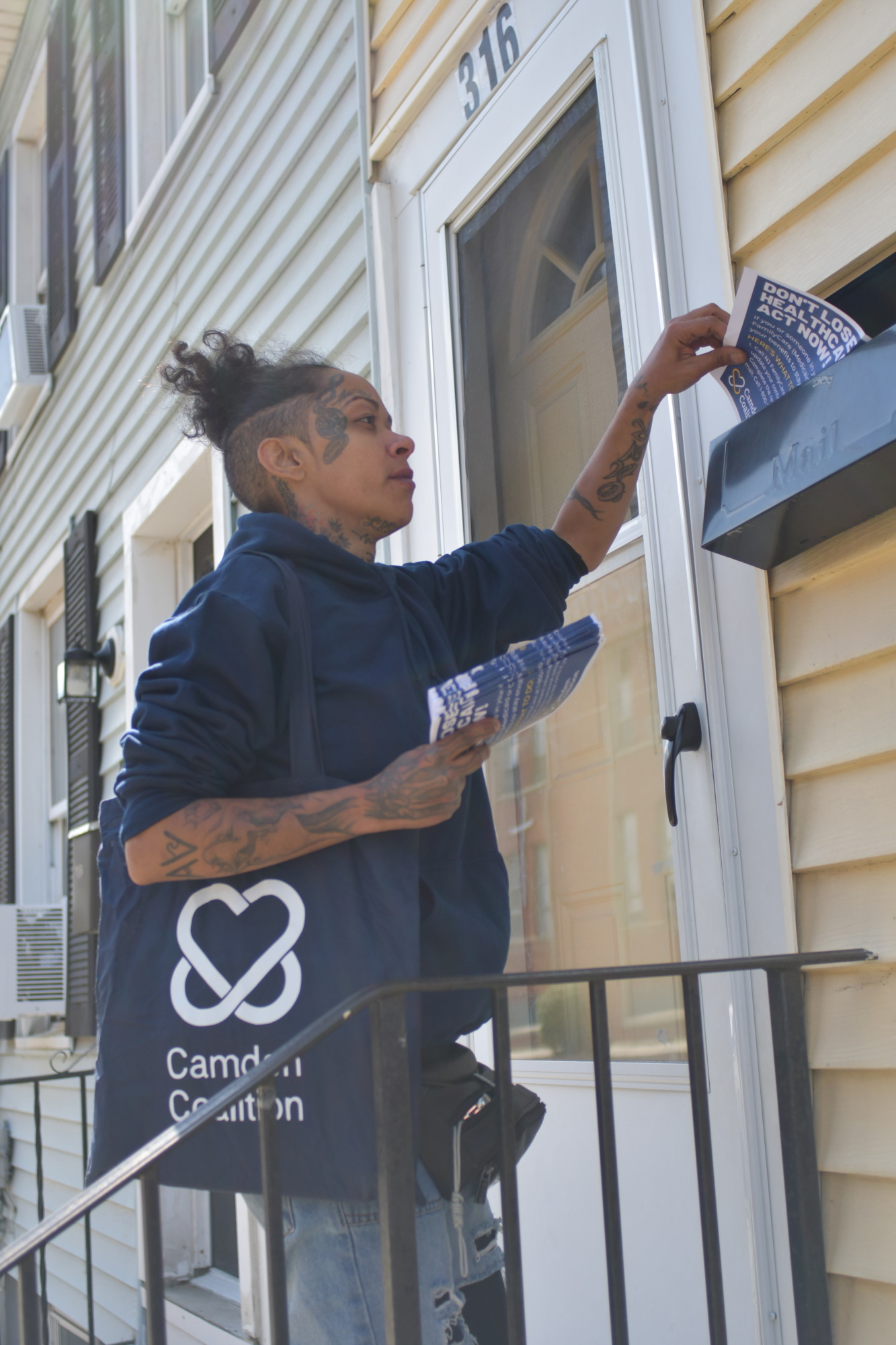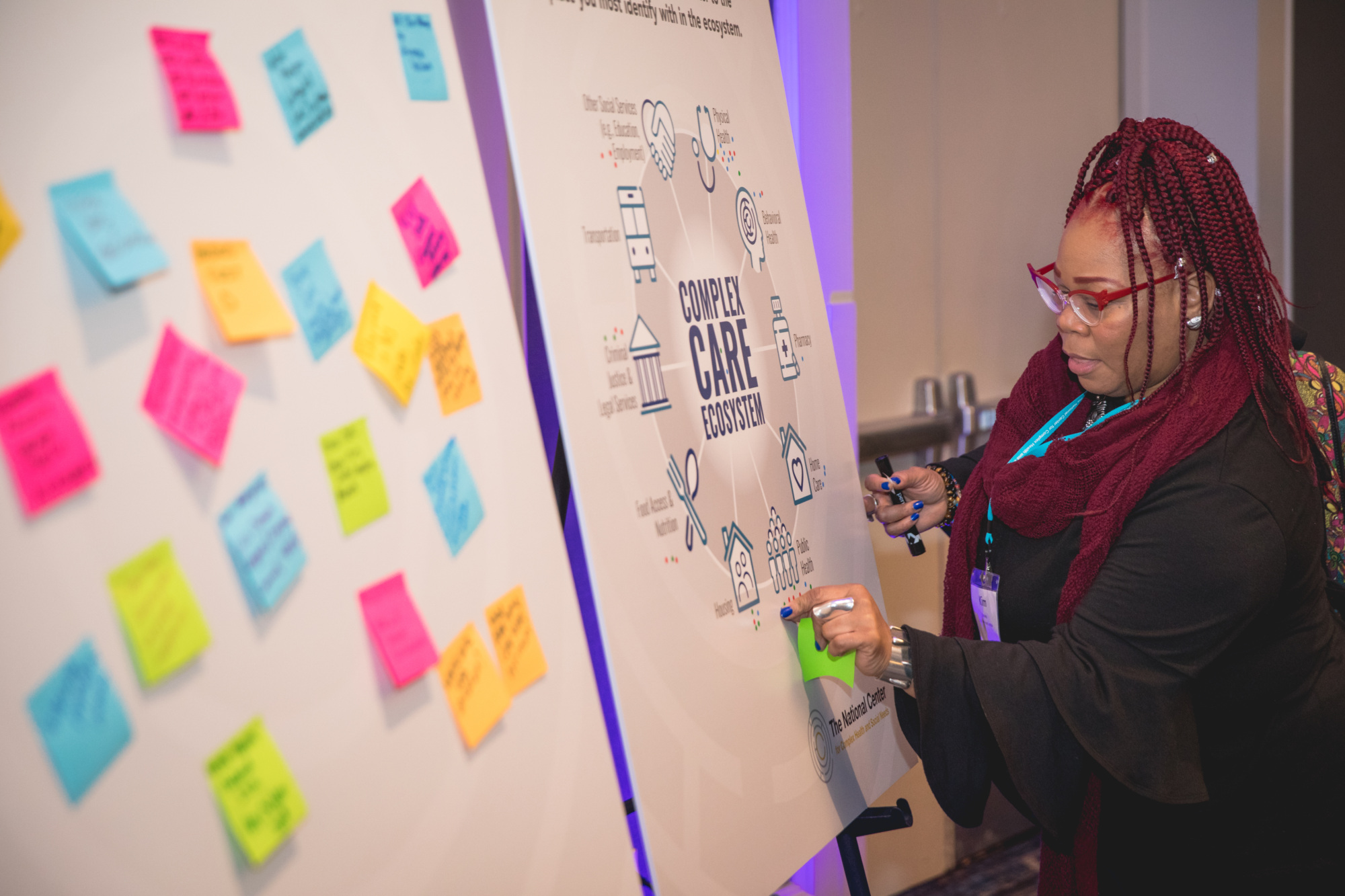
Measuring our impact: Strengthening ecosystems of care in Camden and beyond
Community & consumer engagement Data analysis & integration Strengthening ecosystems of care
Building the complex care field Community & consumer engagement Convening Quality improvement
At the American Hospital Association’s Accelerating Health Equity (AHE) conference, sessions on health equity and community partnerships filled the agenda. This made the AHE a perfect venue to launch the first of many listening sessions that will take place as part of INSPIRE: Initiating National Strategies for Partnership, Inclusion, and Real Engagement, a new national partnership that aims to codify best practices for effective and mutually beneficial community engagement. INSPIRE is supported by the Robert Wood Johnson Foundation, California Health Care Foundation, and The SCAN Foundation.
The goal of the INSPIRE project is to design a national strategy to advance partnerships between healthcare organizations and people with lived experiences in their communities. Over the next year, the Camden Coalition, Community Catalyst, the Center to Advance Consumer Partnership, PFCCpartners, the Institute for Patient-and Family-Centered Care, and a team of experts with lived experience will be embarking on Phase 1 of this project. In Phase 2, our project team’s focus will be translating Phase 1 findings and outputs into tangible, on-the-ground action to generate actionable opportunities and modalities for driving widespread adoption.
Through our own individual and collective experiences doing community engagement, our project team has observed that while there is increasing understanding and buy-in from healthcare stakeholders about why community engagement is valuable, there remains a significant gap in if and how organizations are actually willing and able to build and sustain equitable, impactful, and mutually-beneficial partnerships with people with lived experience in their communities.
Representatives from the Camden Coalition and Community Catalyst were at the AHE conference, engaging with other attendees, leading a listening session, and crowd-sourcing experiences about community engagement work. Our experience and interactions at AHE helped to validate our hypothesis that there isn’t a universal understanding of what constitutes authentic community engagement, or how to go about it. They also provided insight into several areas for further consideration:
There is a need for shared understanding of what constitutes community engagement and how organizational- and individual-level engagement differs. Throughout the conference, it was much more common for healthcare stakeholders to talk about community engagement in terms of their engagement with organizations in their communities – for instance, partnerships with community-based organizations (CBOs), federally qualified health centers, and other community-based practices.
While these types of organizational partnerships have many benefits, they are not synonymous with individual-level engagement that brings people with lived experience and community members themselves to the table.
Some AHE attendees spoke about the importance of building organizational partnerships with BIPOC-led organizations and CBOs that are “boots on the ground” in recognition that some community partner organizations are closer than others to the experiences and everyday lives of individuals in the community. While thoughtful and intentional organizational partnerships may be a strategy for building connections with individuals with lived experience, organizational-level engagement cannot be a stand-in for direct partnerships with community members.
It is important for healthcare organizations to recognize that not all CBOs/community practices can be representative of the experiences, goals, wants, needs, and priorities of individuals with lived experience within a community. Instead, those individuals need to have a seat at the table themselves.
“You can’t improve what you can’t measure” was a theme across several workshops and mainstage sessions, and one that holds true for effective community engagement. Most would agree that not only is there a need for wider adoption of community engagement, but also effective strategies to measure its impact and support for quality improvement to ensure impactful partnerships.
Throughout our interactions at AHE, many attendees seemed stuck on where and how community engagement work could be employed and to what end. While healthcare stakeholders increasingly wanted to bring community members and people with lived experience into their work, organizations need more support to conceptualize and measure the impact of these partnerships.
The significance of social drivers to health outcomes and long-term well-being and the need to address and rectify health disparities were areas frequently discussed at AHE and are also key opportunity areas for building partnerships with people with lived experience, as they can help healthcare stakeholders understand, recognize, and advance strategies that are aligned with and meet the needs of their communities.
A final theme that was clear across our teams’ interactions at AHE was the need for additional and sustainable resources to undertake community engagement work. This was by far the most mentioned theme in our crowd-sourcing activity and came as no surprise in the context of national workforce and operational challenges across healthcare.
There is much to still learn about how healthcare stakeholders envision utilizing these resources and to what extent this includes providing fair and equitable compensation for people with lived experience who act as expert advisors and partners in the work.
Reimbursement pathways, incentive structures, and other funding opportunities that encourage partnerships with people with lived experiences will be an important area for the INSPIRE team to explore in the coming year and a key area that could be a make-or-break for far-reaching advancement of community engagement in healthcare.
The focus on community partnerships at AHE showcased the innovative and collaborative spirit of the healthcare sector and highlighted the potential for positive change in the years to come. Our lessons from engaging with conference attendees will be an important foundation as we develop our national strategy to advance robust partnerships between healthcare organizations and people with lived experience.
So what will the rest of Phase 1 of INSPIRE look like?
Over the next 12-months we will be engaged in a strategic planning and research period to:
We look forward to sharing our findings with the field and learning more from stakeholders at Putting Care at the Center 2023 during a special listening session and other events over the next year.
If you are interested in contributing to this work or have questions about the program, email Taylor Brown at [email protected].
Community & consumer engagement Data analysis & integration Strengthening ecosystems of care
Community & consumer engagement Strengthening ecosystems of care
Building the complex care field Community & consumer engagement Strengthening ecosystems of care
Community & consumer engagement Quality improvement Workforce development





